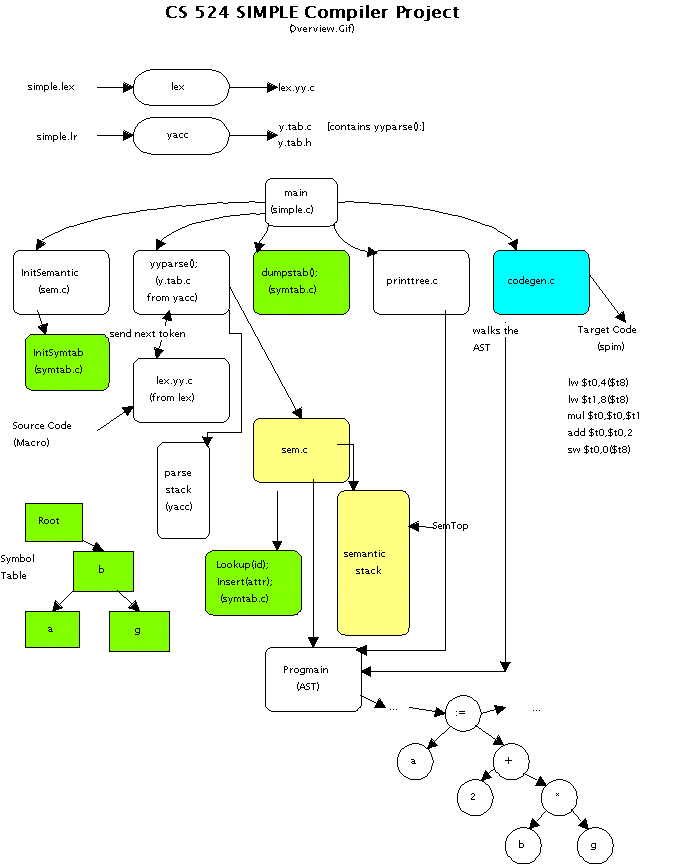Translator, transforming human-oriented programming languages into computer-oriented machine languages. For most users, it is a black-box.
Allows users to ignore machine-dependent details of machine language and develop machine-independent skills and expertise. Particularly valuable with the explosive growth in computing now.
Term compiler coined in the early 1950s by Grace Murray Hopper (Admiral Hopper). First compilers were Fortran in the late 1950s - had to perform translations and optimizations to be competitive with assembly language programmers in those days. The early days of computers were VERY MACHINE ORIENTED and the PROGRAMMER TIME WAS CHEAP.
Thankfully this has changed and portability of programming skills and availability of tools to assist the programmer are assumed to be offered.
A User's View of a Compiler
-------------------
| |
Programming Language -----> | Compiler | ----> Machine
(source) | | (target)
-------------------
Compiler as translator - source languages produced are many and they will not be used unless there is a compiler to assist the programmer.
The choice of target code can vary:
- Pure Machine Code
- Virtual Machine Code
- Assembly Language (Symbolic) Format
- Memory-Image (Load-and-Go) Format
Interpreters - program is merely data to be manipulated. Locus of control during executioni resides in the interpreter and not the user program
Characteristics of Interpreter:
- Modification of or addition to user programs as execution proceeds.
- Language in which the type of object that a variable denotes may change dynamically - user program continually reexamined as execution proceeds and symbols need not have a fixed meaning.
- Better diagnostics, since source text analysis is intermixed with execution of the program.
- Significant degree of machine independence
Large overheads possible
- As execution proceeds, program text must be continuously reexamined, with identifier bindings, types and operations potentially being reconsidered at each reference.
- Substantial space overhead may be involved. Interpreter and all support routines must be avaialbe.
Almost all modern compilers are syntax-directed. That is, the compilation process is driven by the syntactic structure of the source program, as recognized by the parser.
For this class, our parser will be created by the UNIX tool
yacc
.The parser builds this syntactic structure out of tokens, the lowest-level symbols used to define a programming language syntax. For this class, our lexical analysis will be done by defining regular expressions and using the UNIX tool
lex
. to create our scannerScanning is covered in Ch3: Lexical Analysis.
The parser-creator takes as input a formal syntax specification, typically as a context-free grammar (CFG). The parser reads tokens and groups them into units as specified by the productions of the CFG. Grammars and parser are discussed in Chapter 4: Syntax Analysis. The class goal is to become comfortable with Bottom-Up parsing.
The semantic routines actually supply the meaning (semantics) of the program, based on the syntactic structure.
Lex checks our spelling
Yacc checks our grammar
If the semantics are correct, i.e. the source program makes sense, we will generate an intermediate representation (IR) of the program. This is the translation step. The IR can then serve as the input to generate the Target Code.

Overview of our Project [File/Print Preview/ 130% to see on screen well]
Color coded: Yellow for Semantic Routines; Green for Symbol Table routines; Blue for Code geneation routines.
NOTE: we will start to work with this in lab on Friday. You will receive your Rohan account for the class then.